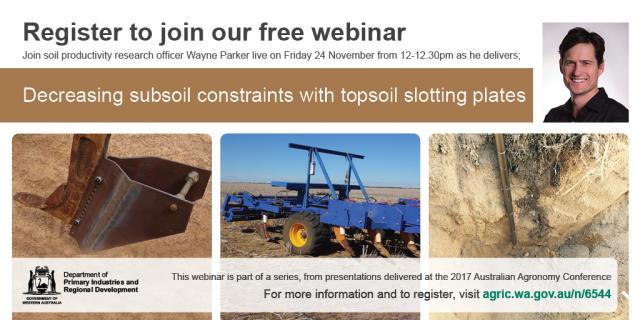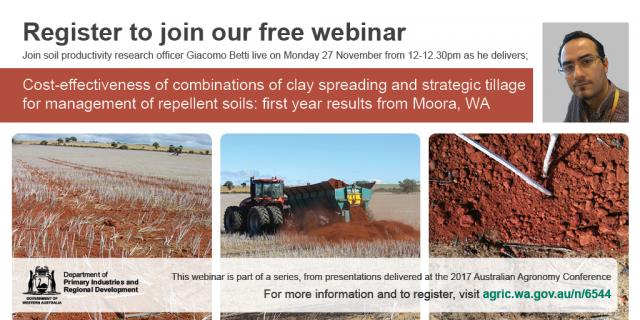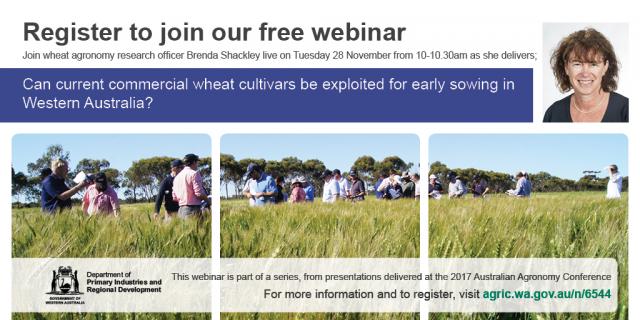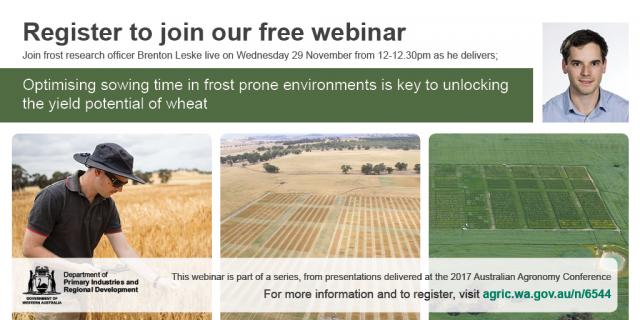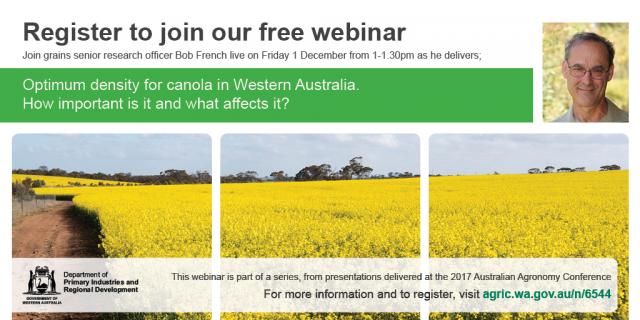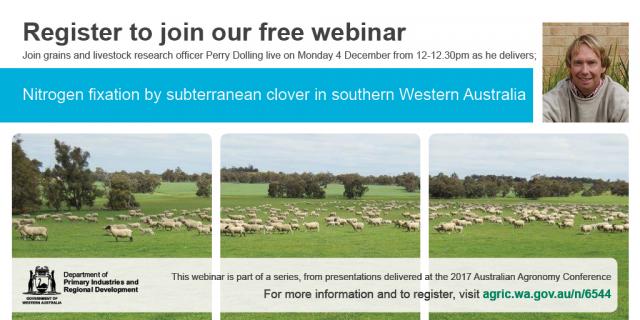Decreasing subsoil constraints with topsoil slotting plates
Presented by Wayne Parker
Cost-effectiveness of combinations of clay spreading and strategic tillage for management of repellent soils: first year results from a site in Moora, WA
Presented by Giacomo Betti
Can current commercial wheat cultivars be exploited for early sowing in Western Australia?
Presented by Brenda Shackley
Optimising sowing time in frost prone environments is key to unlocking yield potential of wheat
Presented by Brenton Leske
Optimum density and optimum seed rate for canola in Western Australia: how important are they and what factors affect them?
Presented by Bob French
Nitrogen fixation by subterranean clover in southern Western Australia
Presented by Perry Dolling
About the Australian Agronomy Conference
The Australian Agronomy Conference supports research and a sense of community by connecting agronomy professionals across Australia. Agronomy is key to ensuring that farmland is productive across Australia’s diverse landscapes. Innovation in machinery and precision technologies, plant species and varieties, soil and plant management may allow the agronomist of today to successfully help agricultural producers thrive. These innovations are timely as the world deals with increasingly variable climates, environmental degradation and a more developed global community that requires more diverse products from agriculture.

